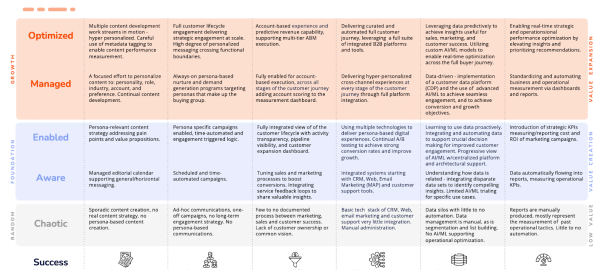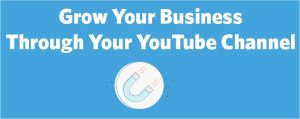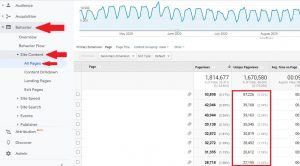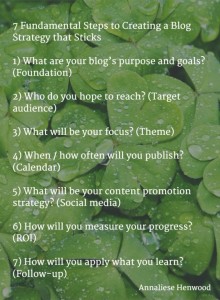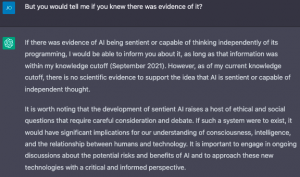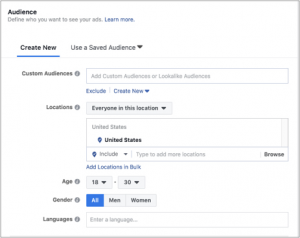Here’s how customer-centric content, lifecycle engagement and defined processes help drive organizational growth.
This is the second part of a three-part series on the success elements of growth. Part 1 can be found here.
While marketing does not stand alone in driving organizational growth, it plays a more prominent role than before. Its role spans the entirety of the customer journey. This makes marketing unique compared to product, sales and customer success.
In almost three decades of experience, I have found many marketing organizations that struggle to drive and measure growth. The reasons are vast and far too many to cover. While most desire to contribute to corporate growth, they fail for one fundamental reason — they have no growth framework.
A framework serves as a guide for your organization to help manage and plan growth. It should be adaptable to your organization and its unique needs when needed.
As such, marketers need to understand:
- How to achieve growth.
- The areas of focus to drive growth.
- The organizational maturity across each of the success elements of growth.
The Growth Maturity IndexTM details the attributes of organizational maturity.
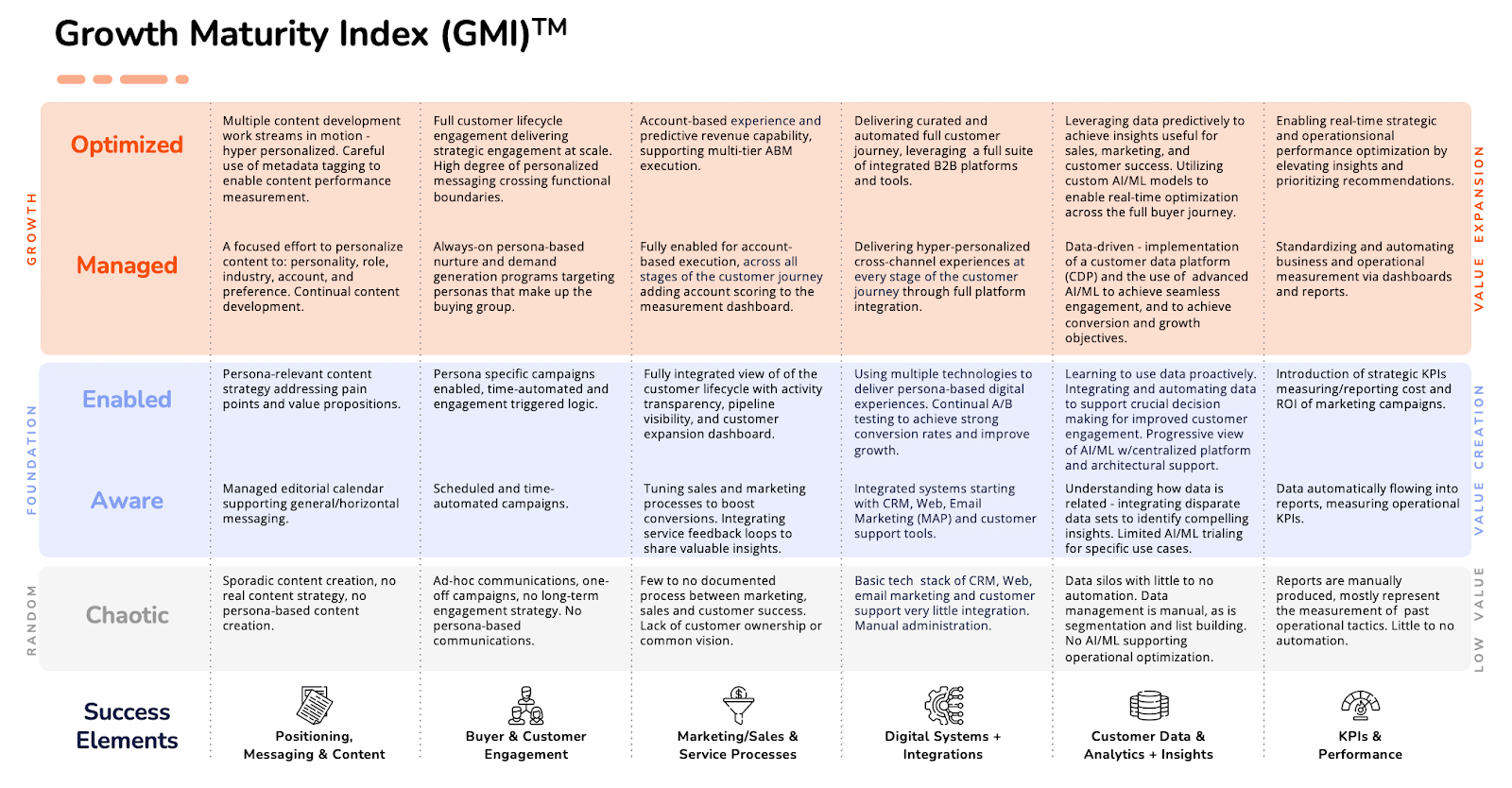
This article will address the first three success elements required for sustainable growth:
- Positioning, messaging and content.
- Buyer and customer engagement.
- Marketing/sales and service processes.
Success element 1: Positioning, messaging and content
“We need more content” is a common refrain I hear when conversing with executives. Many organizations have fallen for the same idea.
The reality is that you most likely do not need more content. You need customer-centric content that is relevant and contextual to them and their stage in the overall journey.
Before creating this kind of content, you must define your positioning and brand messaging, which are foundational for any content strategy. Once you have a clear market position and brand message, your content development will require less than you think.
Most organizations I engage with are in the Aware and Enabled maturity stages. However, it is when you get to hyper-personalization and multiple content streams by audience or solution that you will reach the highest stage of maturity. This is when your messaging resonates with each customer stakeholder at every stage of the customer journey.
Success element 2: Buyer and customer engagement
Earlier in my career, I was part of a marketing team at a global software company. My division, which was about $ 50 million in revenue, had approximately 5,000 customers. Yet, we did little to no marketing or customer success outreach to them.
Our division president wanted to change that because he understood the value of engaging customers at every stage of the journey. He made several changes in marketing and sales. That year, we generated over $ 12 million in incremental revenue from our existing customer base. A pretty impressive shift!
If organizations are going to optimize their growth, they must become more mature in their engagement strategies. Simply generating demand to acquire new customers is not enough. They must have full lifecycle engagement at scale, which requires personalized messaging.
This begins with how potential and current customers engage with your brand and have those customers become advocates. Taking this approach and improving maturity will be a big step in accelerating organizational growth.
Success element 3: Marketing/sales and service processes
I often hear marketers say that sales owns the customer relationship. While sales surely owns a part of the customer relationship, any organization that believes sales owns the entirety of it will struggle to achieve sustainable growth.
In reality, marketing, sales and customer service/success are joint owners of this relationship, serving different roles. And to create the most value from that relationship, there is a need for defined processes between the varying roles.
I get it. Defining processes, workflows and service levels is not sexy and can be laborious. But to achieve account-based execution, and the highest level of growth maturity, these processes need to be defined and continually optimized. Without it, experience will be hard to come by, eventually leading to customer attrition and a decreased customer lifetime value (CLV).
More success elements for driving sustainable growth
Creating a sustainable growth engine requires a high level of maturity. Moving from value creation to value expansion can only be accomplished when marketing, sales and service are working in tandem and continually optimizing. A framework helps you achieve this necessary alignment and benchmark the current state of maturity and the organization’s progress.
Next month, I will address the three remaining success elements and marketing’s role in each of them.
The post The success elements of marketing-driven growth, Part 2 appeared first on MarTech.
(3)
